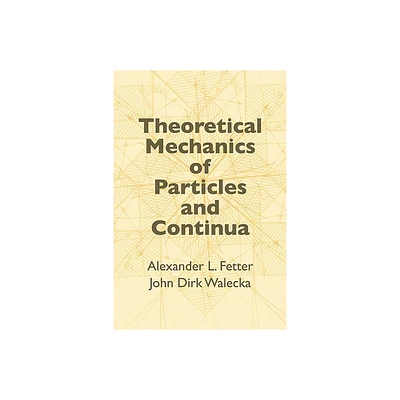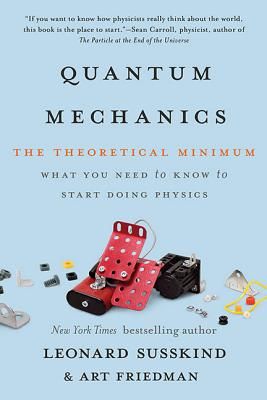Home
Theoretical Mechanics of Particles and Continua
Loading Inventory...
Barnes and Noble
Theoretical Mechanics of Particles and Continua
Current price: $37.95


Barnes and Noble
Theoretical Mechanics of Particles and Continua
Current price: $37.95
Loading Inventory...
Size: OS
*Product Information may vary - to confirm product availability, pricing, and additional information please contact Barnes and Noble
This two-part text fills what has often been a void in the first-year graduate physics curriculum. Through its examination of particles and continua, it supplies a lucid and self-contained account of classical mechanics — which in turn provides a natural framework for introducing many of the advanced mathematical concepts in physics.
The text opens with Newton's laws of motion and systematically develops the dynamics of classical particles, with chapters on basic principles, rotating coordinate systems, lagrangian formalism, small oscillations, dynamics of rigid bodies, and hamiltonian formalism, including a brief discussion of the transition to quantum mechanics. This part of the book also considers examples of the limiting behavior of many particles, facilitating the eventual transition to a continuous medium.
The second part deals with classical continua, including chapters on string membranes, sound waves, surface waves on nonviscous fluids, heat conduction, viscous fluids, and elastic media. Each of these self-contained chapters provides the relevant physical background and develops the appropriate mathematical techniques, and problems of varying difficulty appear throughout the text.
The text opens with Newton's laws of motion and systematically develops the dynamics of classical particles, with chapters on basic principles, rotating coordinate systems, lagrangian formalism, small oscillations, dynamics of rigid bodies, and hamiltonian formalism, including a brief discussion of the transition to quantum mechanics. This part of the book also considers examples of the limiting behavior of many particles, facilitating the eventual transition to a continuous medium.
The second part deals with classical continua, including chapters on string membranes, sound waves, surface waves on nonviscous fluids, heat conduction, viscous fluids, and elastic media. Each of these self-contained chapters provides the relevant physical background and develops the appropriate mathematical techniques, and problems of varying difficulty appear throughout the text.


















